Cordoba, located in a depression on the banks of the Guadalquivir and at the foot of the Sierra Morena. It is the third largest and most populated city in Andalusia after Seville and Malaga.
Its most emblematic monument, the Mosque-Cathedral of Cordoba, is an outstanding example of Islamic architecture and was declared a World Heritage Site by UNESCO in 1984. A decade later, in 1994, its historic center also received this recognition.
Cordoba is famous for its cultural legacy, being the birthplace of historical figures such as Seneca, Averroes and Maimonides. The city is also known for its festivals and traditions, such as the Fiesta de los Patios, which was designated Intangible Cultural Heritage of Humanity in 2012.
The Mosque-Cathedral
The Mosque-Cathedral of Cordoba, begun in 785 by Abd al-Rahman I, is an iconic monument of Islamic art. Originally built over a Visigothic basilica, it was enlarged in several stages by the Umayyads, reaching its maximum splendor in the 10th century with Al-Hakam II. Its interior is notable for a "forest" of columns and bicolor horseshoe arches, as well as for its exquisite mihrab.
After the Reconquest in 1236, it was consecrated as a Christian cathedral, incorporating a Renaissance nave in the 16th century. Declared a World Heritage Site by UNESCO in 1984, it is a symbol of Cordoba's rich history.
VIEW IN MAPThe Roman bridge
The Roman Bridge of Cordoba, built in the first century B.C. during the time of Emperor Augustus, is one of the most emblematic monuments of the city. This bridge, which crosses the Guadalquivir River, was for centuries the only access to Cordoba from the south, being a vital part of the Via Augusta, an important Roman route.
The original bridge consisted of 16 arches, most of which have been restored over the centuries. At its southern end is the Torre de la Calahorra, a medieval fortification.
Declared an Asset of Cultural Interest, the Roman Bridge is a living testimony to the history of Cordoba and a symbol of its Roman past.
VIEW IN MAPCalahorra Tower
The Calahorra Tower, located at the southern end of the Roman Bridge in Cordoba, is a fortress of Islamic origin, built in the 12th century to protect access to the city. Originally, the tower had two sections, but was enlarged in the 14th century by King Henry II, who added a third section, giving it its present form.
The tower has had various functions throughout history, from military defense to prison. Today, it houses the Living Museum of Al-Andalus, which offers an interactive view of the cultural coexistence between Christians, Muslims and Jews in medieval Cordoba.
Declared an Asset of Cultural Interest, the Calahorra Tower is a symbol of Cordoba's Islamic legacy.
VIEW IN MAPRoman Temple
The Roman Temple of Cordoba, built in the first century A.D. during the reign of Emperor Claudius, is one of the few Roman remains in the city. Dedicated to imperial worship, this large temple was located in the forum of the ancient Roman city, in a prominent place of public life.
The temple, in Corinthian style, is characterized by its six frontal columns and ten lateral columns, all of marble, resting on a high podium. Although only remnants of the original structure remain, including some columns and the basement, its historical and architectural importance is undeniable.
Discovered in the 1950s during construction work, the Roman Temple is a testimony to the Roman presence and power in Cordoba.
VIEW IN MAPAlcazar of the Christian Kings
The Alcázar de los Reyes Cristianos, located in Córdoba, is a medieval fortress built in 1328 by order of King Alfonso XI. This palace-fortress was built on the remains of ancient Roman and Visigothic buildings, and was used as a residence by the Catholic Monarchs during the campaign for the reconquest of Granada.
The Alcazar stands out for its sober architecture and impressive gardens, as well as for its towers, such as the Tower of the Lions and the Tower of Homage. Inside are Roman mosaics and the famous Hall of Mosaics, which shows the splendor of the past.
The Alcázar de los Reyes Cristianos is a place full of history, where key decisions were made that marked the history of Spain.
VIEW IN MAPThe Synagogue of Cordoba
The Synagogue of Cordoba, built in 1315 during the time of the Kingdom of Castile, is one of the few remaining Jewish temples in Spain and the only Andalusian synagogue that has survived to the present day. Located in the heart of the Jewish quarter of Cordoba, its design is a sample of the Mudejar style, characterized by the combination of Islamic and Christian elements.
The interior of the synagogue is small but exquisite, with delicate plasterwork decorating the walls and a horseshoe arch leading to the hejal, where the Torah scrolls were kept. After the expulsion of the Jews in 1492, the synagogue had various uses, including as a hospital and hermitage.
Declared a National Monument in 1885, the Cordoba Synagogue is a testimony to the rich Jewish legacy in the city.
VIEW IN MAPPalace of Medina Azahara - Madinat al-Zahra, "Shining City".
Located about 8 kilometers from Cordoba, it is an impressive palace city built in the tenth century by the caliph Abd al-Rahman III. Founded as a new capital of the Caliphate of Cordoba, Medina Azahara was a symbol of the power and opulence of the Umayyad dynasty.
The city was designed with great precision, including a central palace, luxurious gardens and administrative quarters. Its architecture reflected the splendor of the period, with stucco details and high quality mosaics. Although it was abandoned and sacked in the 11th century, excavations have revealed a significant part of its original splendor.
Declared an Asset of Cultural Interest and World Heritage Site by Unesco in 2018, Medina Azahara is a key testimony to the Islamic legacy in Córdoba and one of the most important archaeological sites in Spain.
VIEW IN MAPJewish quarter of Cordoba
La Judería de Córdoba is a picturesque historic quarter that reflects the rich heritage of the Jewish community in the city during the Middle Ages. Located in the historic center of Cordoba, this maze of narrow, winding streets preserves the atmosphere of its medieval past, with whitewashed houses and flowery courtyards.
At the heart of the Jewish Quarter is the Cordoba Synagogue, one of the few surviving medieval synagogues in Spain. The neighborhood also includes the Calle Judíos, where remains of ancient buildings and stores can be found. The Judería was an important cultural and religious center for the Jewish community before the expulsion in 1492.
Today, the Jewish Quarter is one of the most visited areas of Cordoba, attracting tourists interested in its rich history and architecture. Its declaration as a Historic Site in 1984 underlines its value as a cultural heritage.
VIEW IN MAPThe Hermitages of Cordoba, the great unknown
The Hermitages of Cordoba are a group of small chapels located in the Sierra de Cordoba, on the outskirts of the city. Founded in the 18th century, these hermitages were inhabited by hermit monks seeking a spiritual retreat in the midst of nature. Each hermitage is dedicated to a saint and are distributed along a route that offers impressive panoramic views of Cordoba and its surroundings.
The complex includes 13 hermitages, a Calvary and a Way of the Cross, which makes the place an important site of pilgrimage and meditation. The Hermitages of Cordoba are a reflection of the deep spirituality and religious tradition of the region.
VIEW IN MAP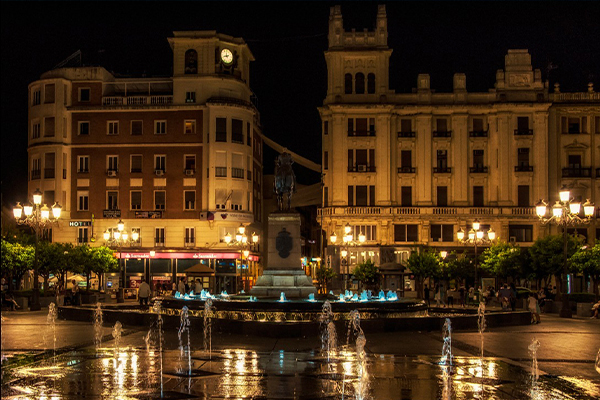
Tendillas Square
It is the nerve center of the city, whose clock marks the hours with the strumming of a guitar. It is considered the center of Córdoba capital, being the square chosen for the most important celebrations such as demonstrations, speeches, sport celebrations, commemorations, etc.
VIEW IN MAP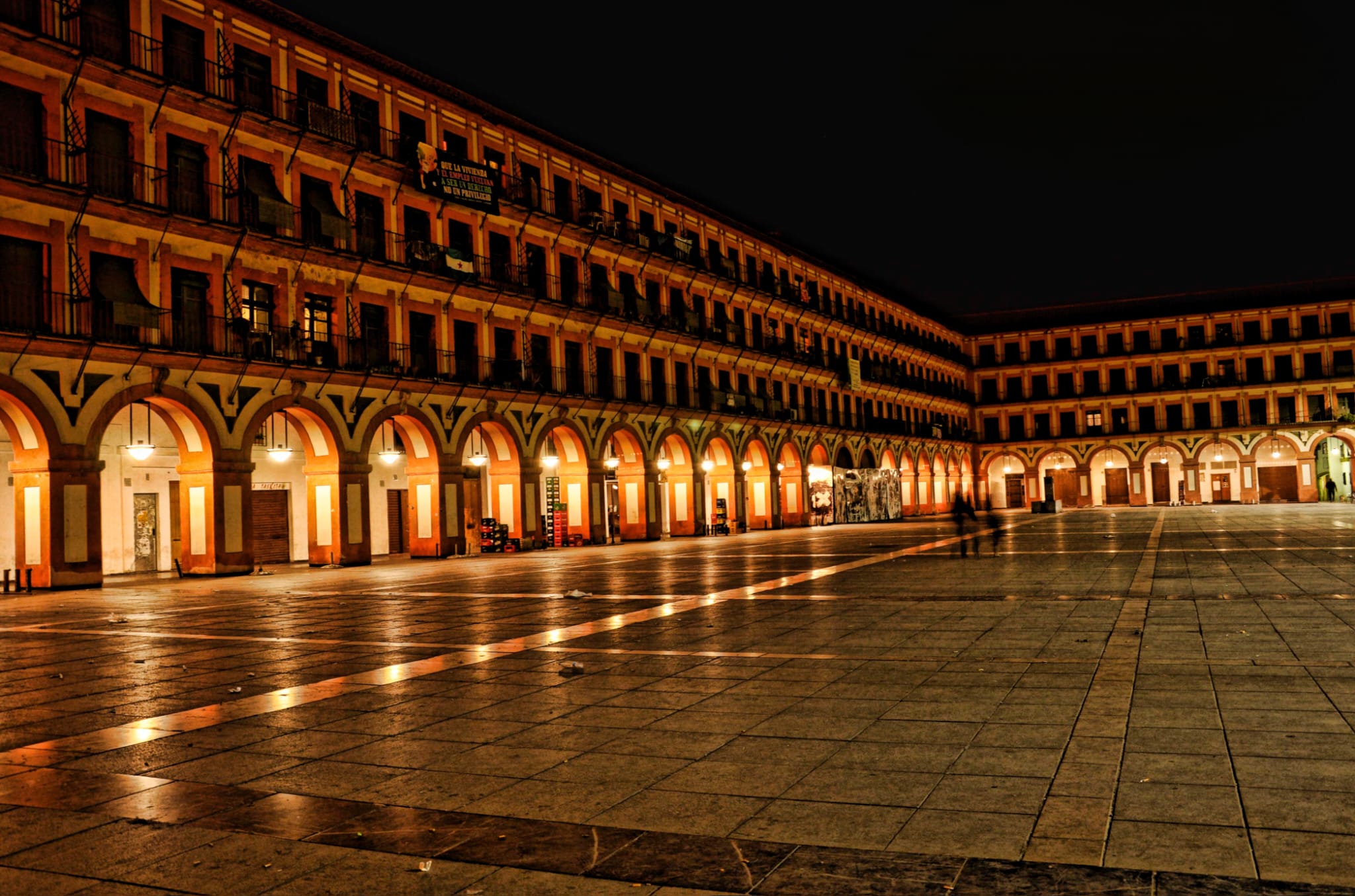
Plaza de la corredera
The Plaza de la Corredera is one of the most emblematic and well-known urban spaces in Cordoba, Spain. Located in the heart of the city, this rectangular square stands out for being the only Castilian-style main square in Andalusia, which makes it a unique place in southern Spain. Its design is reminiscent of the main squares of Castilian cities such as Madrid or Salamanca, with three-story arcaded buildings surrounding its perimeter, creating an enclosed and uniform space.
VIEW IN MAP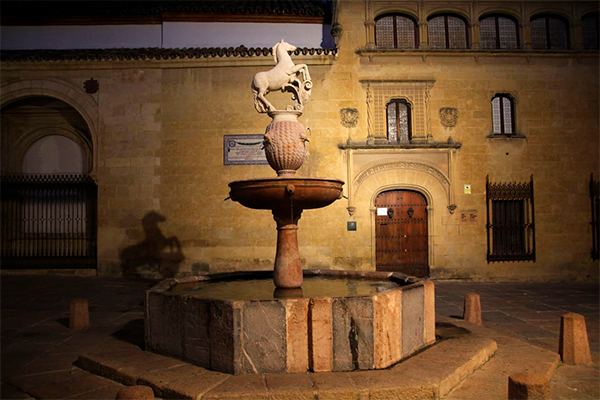
The Plaza del Potro
The Plaza del Potro is one of the most representative of the city of Cordoba, located in the neighborhood of San Francisco, mentioned by Cervantes in Don Quixote.
VIEW IN MAP
Malmuerta Tower
Located near the Plaza de Colón. It was built on a previous Islamic construction, it was erected in the fifteenth century.
VIEW IN MAP
Christ of the lanterns
The Cristo de los Faroles, officially known as the Cristo de los Desagravios y Misericordia, is one of the most beloved and emblematic monuments of Cordoba. This sculpture is located in the Plaza de los Capuchinos, a secluded and quiet place that accentuates the aura of devotion and mystery that surrounds the Christ. The work was made in 1794 by the sculptor Juan Navarro León, at the request of the Capuchin Fray Diego José de Cádiz.
VIEW IN MAP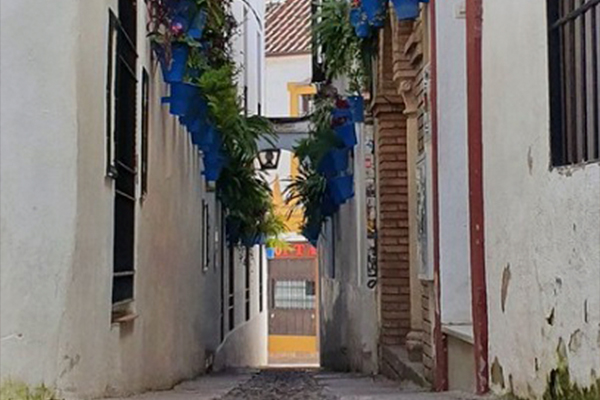
Calleja de las flores
The Calleja de las Flores, in Cordoba's Jewish quarter, is a picturesque narrow cobblestone street, famous for its walls adorned with pots of colorful flowers. At the end of the street, a courtyard offers an iconic framed view of the Mezquita-Cathedral tower, making it an emblematic postcard of the city.
VIEW IN MAP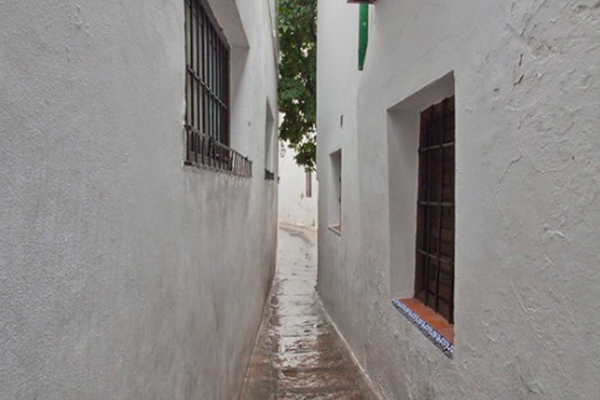
Street of the handkerchief
The Calle del Pañuelo, in Cordoba, is one of the narrowest streets in the city, located near the Mosque-Cathedral. Its name comes from its narrow width, equivalent to an extended handkerchief. At the end of the street, a small courtyard with a fountain and a view of the tower of the Mosque make it a charming and hidden corner of the city. It is a place that reflects the uniqueness and charm of the historic streets of Cordoba.
VIEW IN MAP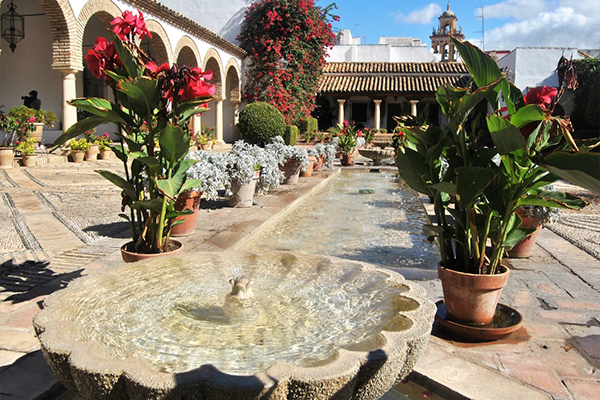
Viana Palace
The Palacio de Viana, in Cordoba, is a historic building from the 14th century, known for its 12 unique courtyards and its garden, which reflect the Cordovan tradition. Its interior houses a valuable collection of art and furniture. Declared a Historic-Artistic Monument, it is an outstanding example of Andalusian stately architecture.
VIEW IN MAP